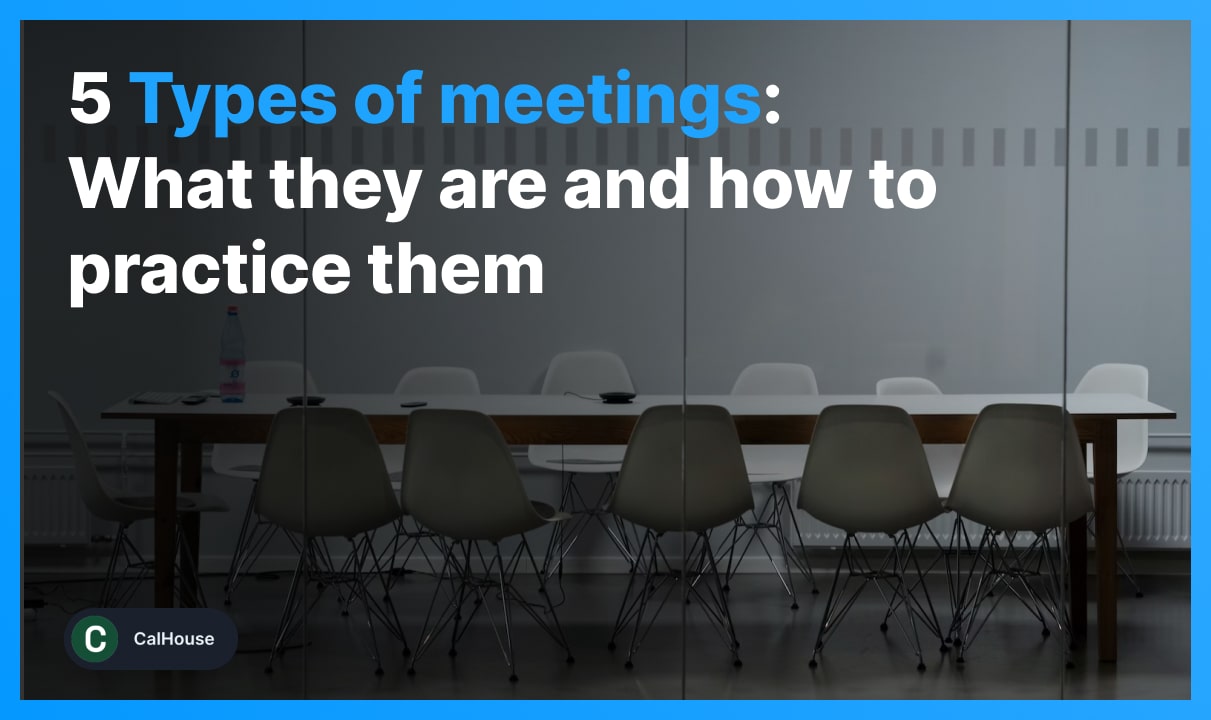5 Most Common Types Of Meetings In 2024

This article is about the 5 most common types of meetings in the business world.
In this list, we'll go into detail about 5 of the most common meeting types: what they are about, how they take place, and what they are generally used for.
Let's check out how to make your meetings more effective and feel less like a waste of time by categorizing them into 5 groups.
5 most common meeting types
The most common meeting types are: decision-making, one-on-one meetings, team-building meetings, problem-solving meetings, and information sharing.
Now, let's check out what every meeting type is about and how to handle it.
1. Decision-making
As the name might suggest, decision-making meetings are required when a team needs to take a specific action and everybody needs to give their opinion.
In a decision-making meeting, participants should include key stakeholders, leaders who usually take decisions in the team, and subject-matter experts.
Shortly, a decision-making team should have the people who are in charge of the company and its teams in order to take the most effective decisions.
At the end of the decision-making conference or meeting, the team should have a clear conclusion on what's next.
2. One-on-one meetings
A one-on-one meeting (1:1 meeting) is a private conversation between two individuals in a company, commonly between a manager and a team member.
This type of a meeting is essential because it helps clear any concerns and existing or upcoming problems in a team.

Typically, one-to-one meetings have the purpose to establish a connection, build rapport, address concerns, and even provide feedback on certain subjects.
Speaking of which, did you know that our meeting scheduling software helps you create one-on-one meetings for free? Sign up for CalHouse today.
3. Team-building meetings
Team-building meetings have the goal of building a better, stronger team.
These meetings are designed to promote teamwork and help a team's members to get closer and work together.
Team-building conferences may include round robin meetings, where participants have the same amount of time to meet each other, one by one.
These types of meetings help strengthen relationships in a team and build stronger relationships for the future.
4. Problem-solving meetings
Every now and then, problems appear in a company or a team. As the name suggests, a problem-solving meeting's goal is to find and fix the issue ASAP.
You want to first write down the problem and then figure out: what caused it, how you can fix it, and then take steps to prevent it from recurring.
Problem-solving meetings may take place between the leaders of a company, or it may also include other team members.

Here are some of the most common steps involved in this type of a meeting:
- Problem identification and analysis;
- Brainstorming and finding ideas to address the issue;
- Evaluation of the methods and prioritization;
- Decision-making → Choosing a way to fix it;
- Evaluation of the process.
Communication is key when it comes down to problem-solving, so make sure everybody hears each other out in your problem-solving meeting.
5. Information-sharing meeting
During an information-sharing meeting, individuals exchange relevant knowledge with other team members, stakeholders, and colleagues.
The purpose of such a meeting is to ensure that every meeting participant has access to necessary information, which is most likely shared in this meeting.
Having a Q&A section during your info-sharing meeting is crucial, since participants need to ask questions about the shared information.
This helps them understand the information easier and then proceed to use it the right way, without misleading anything.
To conclude...
What makes a great meeting is a simple message that answers the ongoing problem in the team and paves the way forward to progress.
While it may seem easy to remember, people tend to forget: being clear and straight-forward is the way to go in any type of meeting.
You cant' go wrong, and people will understand what's the problem and how to fix it.
Want more of this, for free?
About the author
Ch David is the co-founder of SignHouse. David is here to help the product development team expand the capabilities of ultimate eSignature maker for all your needs. Join David and the SignHouse team in stepping up electronic signatures!

.svg)


.webp)
.webp)



.webp)
.webp)